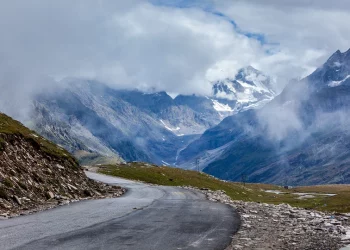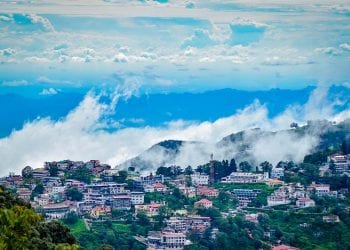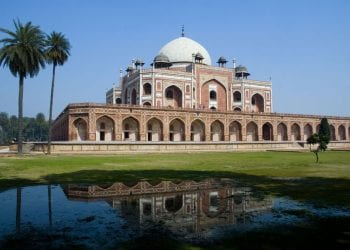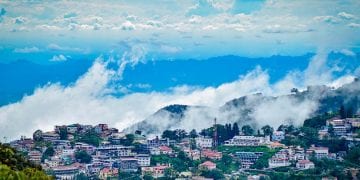Kinnaur – The Land of Apples and Gods
Kinnaur Valley is one of the most beautiful valleys and one of the 12 districts of Himachal Pradesh. It is renowned for apples and orchards, lovely meadows covered with dense woods and the most adventurous routes that cut through these valleys for a mesmerizing road trip.
This area has the right kind of adventure to offer especially on road trips. The place looks splendid covered in snow. There is also a viewpoint that gives us a breath-taking view of Kinnaur Kailash, which is a sacred mountain to Hindus, very close to the Tibetan border. Interestingly the meadows in Baspa valley or Chitkul, considered to be the last village in India, can be reached from Kinnaur.
History
Kinnaur was earlier a part of erstwhile Chini Tehsil in Mahasu District. Later it went on to become a separate district on 1 May 1960. It was a part of Bushahr principality and had Kamru as its capital. There is no historical record of the Kinnaur region
Geographic Perspective
Kinnaur is one of the smallest districts in India by its population count. There is a mountain area that ranges from 2320 to 6816 meters in altitude. This place is renowned for the very famous Kinnaur Kailash Mountain, sacred to Hindus, that lies near the Tibetan border.
Climatic Conditions

Kinnaur, due to its high elevation, experiences a very moderate climate. The winters seem to be longer from October to May and summer lasts from June to September. The region experiences slight monsoon rains in Sutlej and Baspa valleys. Baspa valley witnesses the highest rainfall in July. They are considered as arid regions and witness climate similar to Tibet and Central Asian countries.
Fun fact! A study done by IIT Delhi in 2016 said that Kinnaur has the cleanest air in the country. So all those looking from fresh air with favorable weather conditions and a little getaway from the pollution, Kinnaur can certainly help you bring peace in life.
Flora and Fauna
- Some parts of Kinnaur Valley lies in the high altitudes of Himalaya where the vegetation is very meager and mostly consists of hardy grasses.
- In the Mid-Kinnaur region, species like Juniper (shrubs), Pine, Firs (evergreen coniferous trees), Cypress, Rhododendron (woody plants) are found in the altitudes between 3,500 and 5,000 meters.
- In the lower altitudes, trees of temperate climates are found like Oak, Chestnut, Maple, Birch, Apple, Apricot and many others.
- The most common fauna species reared are Yaks and Dzos by farmers. Himalayan Black bear and small Ponies are found here.
Kinnaur Valley Seasonal Visits
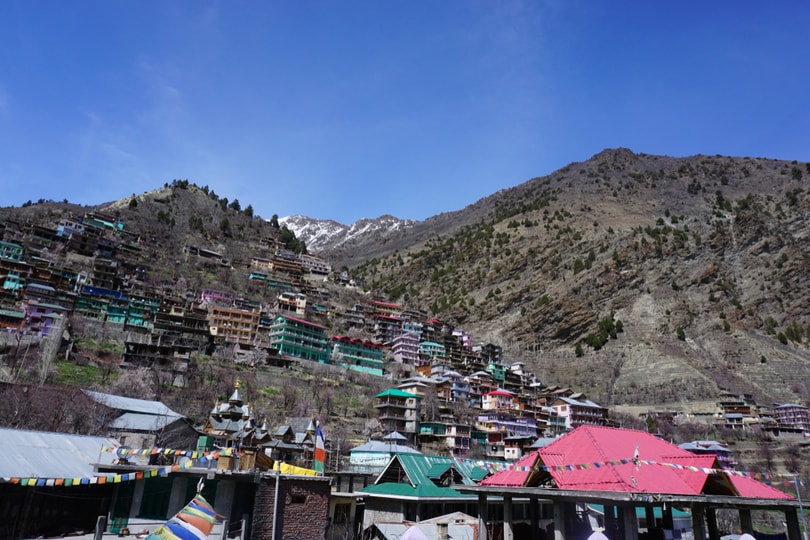
Kinnaur valley has something to offer in almost all the seasons except for the rainy season which is dangerous and not advisable.
1. Kinnaur Valley in March-April
This is the time when the snow starts melting and the spring brings the newly blooming flowers to the apple orchards. This is the best time and is a treat to the eyes because the whole valley is filled with vibrant flowers making it a beautiful landscape on the Himalayas. It is also a time to see the snow-laden peaks of the Kinnaur region. The roads to Chitkul opens in the second week of March. This is mostly an off-season as people don’t visit here until May.
Caution: Because it’s the time snow melts, one must be careful while traveling on the roads as it becomes a landslide-prone area. Occasionally expect slight snow/rainfall.
2. Kinnaur Valley May-June-July
The months of May and June are the peak season that goes up to mid-July. This is the best time to go on a road trip from Manali to Spiti valley and this is the reason people choose this season because Spiti valley is a major attraction. All the sight-seeing places in Kinnaur open up during this time, so people who want to visit as a tourist can choose these months. Get some fresh air in the unbearable scorching heat during summers.
Caution: Monsoon has been very unpredictable in these last few years and mid-June seems to have experienced some monsoon showers that can make your travel a bit risky. So it is always advised to check upon the climate and weather reports and then make plans accordingly.
3. Kinnaur Valley in August or Monsoon
Full-fledged monsoon starts in August and since the whole region becomes so prone to landslides, one must completely avoid going for a trip during monsoons. This time of the year experiences many landslides and these natural calamities cannot be predicted or avoided. It is also the season for apples to grow, so crop transportation sometimes creates traffic jams and it can be quite risky to be traveling with a heavy loaded vehicle.
Note: Keep buffer days in case you might have to change the trip dates and cancel tickets.
4. Kinnaur Valley in September-October-November
This is the time to enjoy a fulfilling road trip in the Kinnaur valley as the monsoon goes and pre-winter or autumn or fall sets in. This makes the roads beautiful, covered with leaves and flowers along with freshness in the air. It is blooming with orange leaves on trees along the roadside and makes your road trip ever more mesmerizing. This time of the year is not for snow lovers as most of the snow melts by this time.
Note– Carry some warm jackets as it may get chilly during the nights.
5. Kinnaur in December-January-February
It is the time when winter begins and is the time for closure of the valley as it experiences heavy snowfall and no tourists are allowed to travel. Chitkul and Sangla roads are shut down for 4 months. If one wants to enjoy the winters, visit Kalpa.
Caution: Going on Higher altitudes in Kinnaur valley can be dangerous as the snow bed is thick. There is a lack of electricity and extreme weather conditions.
How to Reach Kinnaur?
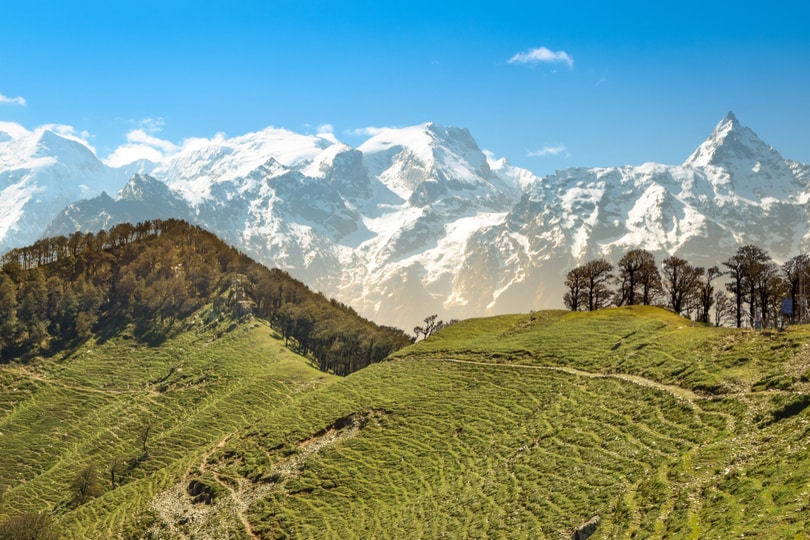
By Road– Local taxis are always available from Shimla for your Kinnaur trip or to any destination in Himachal Pradesh. The approximate charge taken by them is 3000-3500 per day.
By Air- Nearest airport is Shimla. Reach Shimla by flight and then take local taxis to Kinnaur.
By Rail- Kinnaur does not have a railway station of its own. One can reach Kinnaur by a narrow-gauge rail connected from Kalka to Shimla.
Permits for Visiting Kinnaur Valley
Only foreign Nationals visiting the protected area like Spiti and Kinnaur valley will require inner line permits of ILP. Domestic Indian people need not carry any permit but one must always carry an identity card with them.
Where to Eat in Kinnaur Valley?
The dhabas on the way to Kalpa or Sangla are a great choice. The most famous one and highly recommend is the ‘Last Indian Dhaba’ in Chitkul
Medical Assistance in Kinnaur Valley
In case of any medical emergency, one should keep the number of the district hospital on Reckong Peo. A local hospital is available in Sangla village whereas the biggest hospital of Kinnaur valley is in Baspa Valley. It is also advisable to carry a personal first aid kid throughout the travel along with basic medicines.
Preferred Vehicle
The ones with higher ground clearance are preferable and 4*4 ones are not required. Some people also make visits in hatchback and sedan cars are well. It is advisable to travel safe and strengthen driving skills before you visit the place with your cars.
Places to Visit Nearby Kinnaur Valley
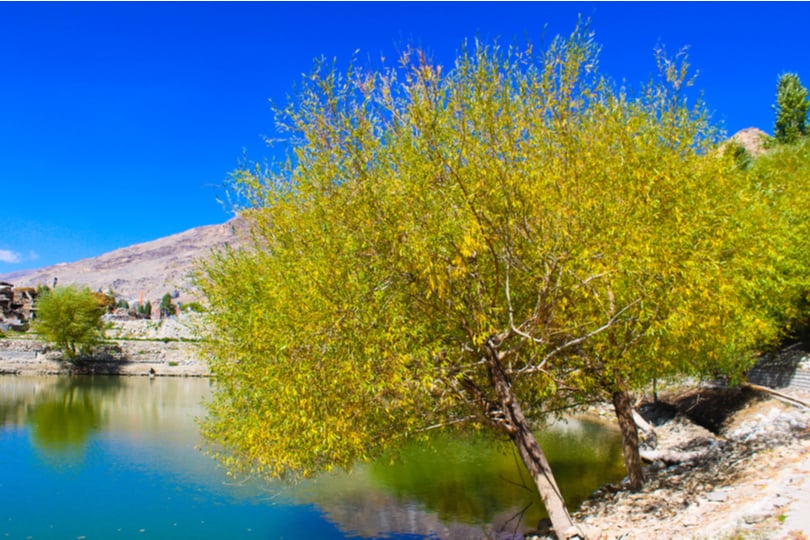
- Kalpa: Located in the Sutlej River Valley, this place is the spot to find your peace and calm. Known for its beautiful temples and monasteries, it is also famous for its apple orchards. The magnificent Kinnaur-Kailash range that can be viewed across the Sutlej River makes it memorable. An early morning walk is recommended here.
- Reckong Peo: This place is the headquarters of Kinnaur district. Some major attractions here include apple orchards, Pine trees, and deodars. The two great wonders of the Himalayas that are Kailash Parvat and Shivalinga rock can be viewed from here.
- Sarahan: Very scenic, this place brings out the explorer in you. Take a walk through its endless forest and valleys.
- Nako: Known as ‘land of fairy-tales’ this place is surrounded by loads of greenery and is home to many different rare species. It is located between Kinnaur and Spiti valley so, on the way to Spiti, one can plan to visit Nako. It is located at a height of 3,600 meters. This place is extremely close to the Tibetan border that is why certain permit and entry fee is also charged here.
- Moorang: The spectacular Apricot orchards which are abundant give us a brilliant view. There is an old fort built by Pandavas that can be a nice place to sit back and relax. This place is home to Black beer, brown bear and musk deer.
- Lippa: There are 3 Buddhist temples named Galdang Chhoikar, Dunguir and Kangyur. There is an old monastery dedicated to a local deity Tangtashu.
- Kothi Village: A very unusual architectural style and fine sculptures make it all the more picturesque.
- Kamru Fort: This is 2-3 kilometers away from Sangla Village. An old Kamru fort which is about 1000 years old is considered to be one of the oldest forts in Himachal Pradesh.
Kinnaur valley makes for a delightful vacation spot. You must experience it at least once in your lifetime. So, when are you planning a vacation to Kinnaur?
P.s. You might like these related resources:
- Parvati Valley – Complete Guide For First Time Visit in Himachal Pradesh
- Popular Hilly Wonders of Himachal Pradesh
- The best places to visit in Kasol that will rejuvenate you
Recent Posts
Top Picks
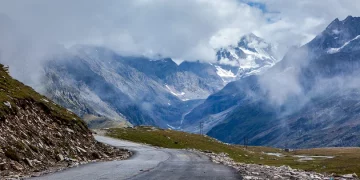
- OYO
 15 April, 2024
15 April, 2024 - Cultural Tour

- OYO
 15 April, 2024
15 April, 2024 - Cultural Tour

- OYO
 15 April, 2024
15 April, 2024 - Cultural Tour

- OYO
 15 April, 2024
15 April, 2024 - Cultural Tour

- OYO
 15 April, 2024
15 April, 2024 - Cultural Tour

Please rotate your device
Please go back to portrait mode for the best experience





 April 15, 2024
April 15, 2024 